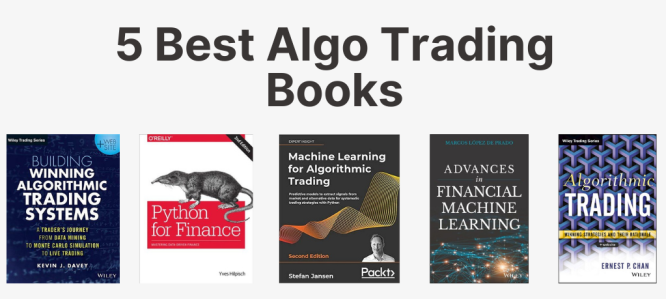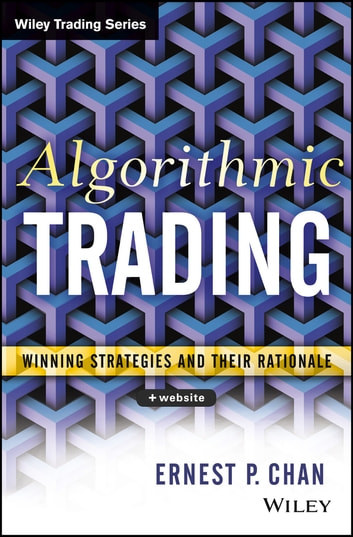5 Best Algo Trading Books (2024)
Algo Trading Specifics
1. Building Winning Algorithmic Trading Systems
By Kevin J Davey

If you're not quite prepared to delve into an intricate and technically dense read, brimming with challenging concepts that will undoubtedly push your cognitive limits, within the realm of algorithmic trading literature, this particular book serves as an excellent preliminary step. Kevin J Davey crafts his narrative as though chronicling a personal diary, recounting two decades of trials and tribulations in the trading world. Spoiler alert: in contrast to other books demanding strenuous mental exertion on every page, this one offers an engaging and enjoyable journey that gradually acquaints you with trading and programming concepts.
The book unfolds across seven integral sections: A Trader's Journey (1), Your Trading System (2), Developing a Strategy (3), Creating a System (4), Considerations before Going Live (5), Monitoring a Live Strategy (6), Cautionary Tales (7), and more.
In the initial segment, Davey candidly shares the prevalent mistakes that plague every trader, mistakes he himself grappled with in his early days. He then delves into fundamental methods for testing any trading system, introducing concepts such as the Monte Carlo simulation for analyzing the system's performance. Progressing further into the book, Davey meticulously outlines his current approach to crafting successful algorithmic trading systems. Prior to system design, he advocates for setting specific, achievable, and relevant goals, establishing a method to gauge progress, and imposing deadlines for system creation.
2. Python for Finance
By Yves Hilpisch
Buy this book : Python for Finance

In the expansive realm of programming languages, utilizing C++ for algorithm development is a possibility, but it's by no means the sole option. Enter Python, and the question arises: Why choose Python?
To begin, Python boasts robust support for AI/ML frameworks and big data, indispensable elements in the journey of algorithmic development. Additionally, for beginners venturing into the coding arena, Python stands out as renowned for its user-friendly nature, making it an ideal starting point.
Yves Hilpisch's book claims the second spot on our list of top algorithmic trading books, guiding readers through fundamental programming concepts crucial for algorithm creation. The emphasis on Python in finance adds an extra layer of relevance for those pursuing further studies in the field. The book unfolds through various sections: Why Python for Finance (1), Mastering the Basics (2), Financial Data Science (3), Algorithmic Trading (4), and Derivatives Analytics (5).
Hilpisch initiates the journey with a brief exploration of Python's history before delving into its application in finance, highlighting aspects like infrastructure, syntax, efficiency, and productivity. Transitioning to the next segment, he navigates through basic programming concepts, demonstrating their application in data analysis. This sets the stage for an accelerated progression toward algorithmic trading, encompassing lessons on data retrieval, strategy implementation, neural network utilization, financial model simulation, and the ultimate construction of successful algorithmic trading systems.
3. Algorithmic Trading: Winning Strategies
By Ernie Chan
Buy this book : Algorithmic Trading: Winning Strategies

Geared towards those already well-versed in crafting algorithmic trading strategies, "Algorithmic Trading" proves to be a valuable resource. The author asserts that the mathematical prerequisites for trading stocks, futures, and currencies are notably less demanding than those for derivatives trading. As per the author's assurance, individuals acquainted with freshman calculus, linear algebra, and statistics should seamlessly navigate the discussions presented in the book.
Contained within its 200 printed pages are eight chapters, each serving as a roadmap for readers with prior algorithmic trading experience. The chapters include "Backtesting and Automated Execution," "The Basics of Mean Reversion," "Implementing Mean Reversion Strategies," "Mean Reversion of Stocks and ETFs," "Mean Reversion of Currencies and Futures," "Interday Momentum Strategies," "Intraday Momentum Strategies," and "Risk Management."
The initial section emphatically stresses the importance of backtesting every proposed strategy before actual implementation. From there, the author delves into the nuances of Mean Reversion, illustrating how periodic profitability can be extracted from such strategies. Finally, Chan focuses on the construction and testing of momentum strategies, providing diverse use cases across futures, ETFs, and commodities. Notably, the principles expounded in the book extend beyond traditional assets to encompass digital currencies as well.
4. Machine Learning for Algorithmic Trading
By Stefan Jansen
Buy this book : Machine learning for algorithmic trading

Securing the fourth position on the list, this book earns its rank by delving into the essential foundations and intricacies crucial for a comprehensive understanding before delving into more challenging works within this genre. Stefan Jansen takes a holistic approach, not merely concentrating on isolated facets like machine learning, stock trading, or algorithmic coding; instead, he seamlessly integrates these elements. While navigating through the content, be prepared to reference external sources frequently, but the effort invested in comprehending Jansen's work will undoubtedly ease the assimilation of information from even more complex texts in the field.
Embarking on an extensive study journey, encompassing a substantial 820 pages, one wonders, "What knowledge will be gained?" The book unfolds through four distinct parts, each tackling diverse challenges. It commences with an exploration of data sourcing (1), progresses to model optimization (2), delves into natural language processing (3), and culminates in the realms of deep and reinforcement learning (4).
In the initial section, Jansen adeptly demonstrates how Python can be wielded to access and manipulate trading and financial statement data. The reader is then ushered into the realm of supervised and unsupervised machine learning models, with practical insights on their application in trading scenarios. A dedicated segment of the book is reserved for unraveling the intricacies of processing natural language for extracting alternative data. Furthermore, the reader gains insights into adapting deep reinforcement learning and, in a broader context, modeling an agent capable of interacting intelligently within the financial market.
5. Advances in Financial Machine Learning
By Marcos Lopez de Prado
Buy this book : Advances in financial machine learning

The final addition to our compilation of top algorithmic trading books presents a formidable challenge, catering to those already proficient in implementing statistical data analysis techniques, time series analysis, machine learning, portfolio management, and Python.
In its printed format, the book spans 353 pages organized into five parts: "Data Analysis," "Modeling," "Backtesting," "Useful Financial Features," and "High-Performing Computing Recipes." Notably, this complex material forms the basis of a several-month-long course at Cornell University.
Authored by Marcos Prado, the book delves into various data types, including market and alternative data. Prado demonstrates the application of meta-labeling, extensively explores labeling and backtesting, and employs machine learning to optimize results. The content extends to leveraging supercomputers in financial algorithms, addressing crucial topics such as backtesting pitfalls, hierarchical risk parity, deflated Sharpe ratios, explosiveness tests, entropy estimators, and microstructural features—chapters deemed essential for readers navigating this challenging material.
Also: Learn about Algo trading- What is Algorithm Trading – Strategies, Tips, Challenges & more.


